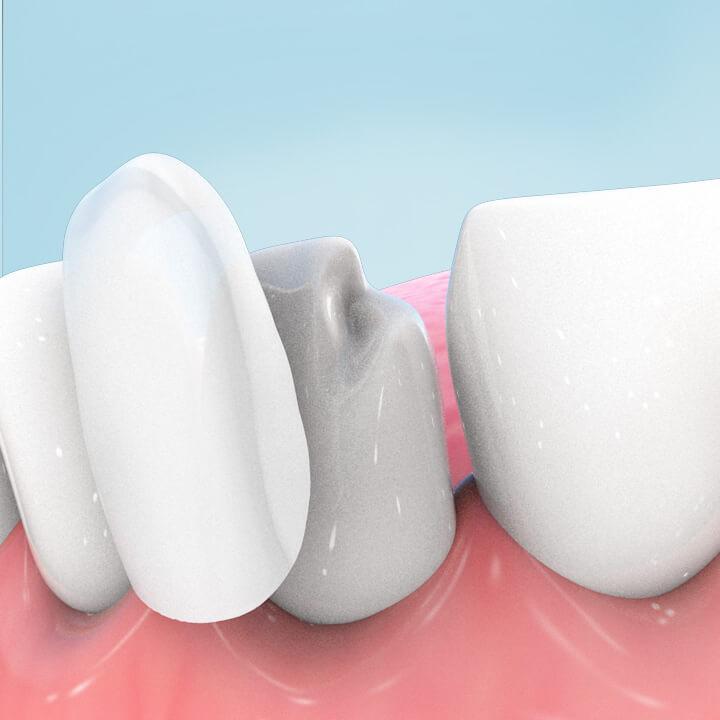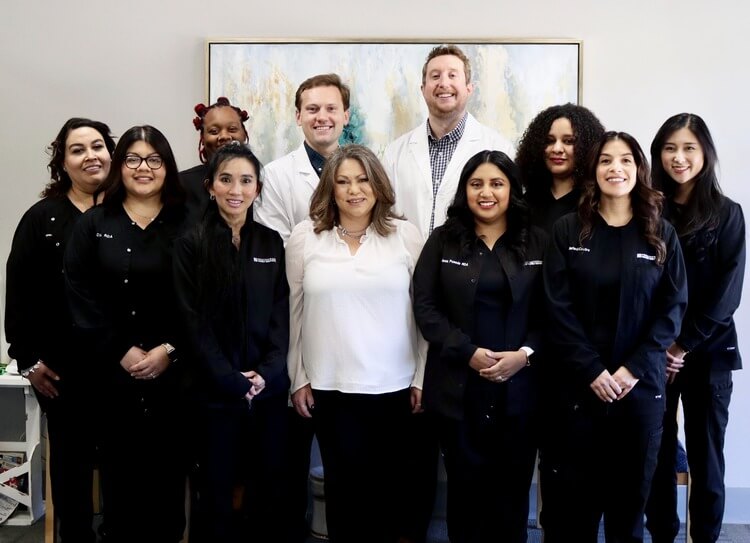From Frysh Dental Group to Prestonwood Family Dentistry. Carrying forward more than 30 years of Exceptional Patient Care.
From Frysh Dental Group to Prestonwood Family Dentistry. Carrying forward more than 30 years of Exceptional Patient Care.
From Frysh Dental Group to Prestonwood Family Dentistry. Carrying forward more than 30 years of Exceptional Patient Care.
From Frysh Dental Group to Prestonwood Family Dentistry. Carrying forward more than 30 years of Exceptional Patient Care.
Dental veneers are thin, custom-made shells that cover the front surface of teeth to enhance their appearance. They can fix discoloration, chips, gaps, and shape issues. Veneers can be applied to a single tooth or multiple teeth, typically eight or more, to create a complete smile makeover.
Because veneers cover the visible portion of teeth, they can change the shape, color, and size of the teeth. We can make veneers out of a thin shell of porcelain or tooth-colored filling material called composite. The thickness of veneers varies depending on the problem they cover. For example, very dark discoloration of teeth requires a thicker layer of porcelain or composite to prevent the darkness from showing through the veneer.
Many people opt for veneers to correct common smile problems. Veneers do not reposition the underlying teeth, and they do not cover the back of the front teeth. Because of this, veneers are not capable of covering severely crowded teeth or teeth with large spaces between. Veneers are not strong enough to support a “fake” tooth, so they are never used to support a bridge.
Veneers are wonderful for covering and recreating smiles with the following cosmetic problems:
– Staining or discoloration that does not respond to professional teeth whitening
– Minor crowding or misalignment of the front teeth
– Small spaces or gaps between the front teeth
– Chipped teeth
– Teeth that are congenitally smaller than “normal” – this commonly occurs on the lateral incisors (the teeth on either side of the two front teeth)
– Misshapen teeth
– Worn and/or jagged teeth

Because veneers are a significant investment in your smile, the first step may be the most important one, and it is communication. People hold many different opinions on what makes a smile beautiful. Not everyone wants a “Hollywood” smile with perfectly straight, even, bright white teeth. Many prefer a smile that looks more like natural teeth, only slightly improved from their own natural teeth. Communication is essential between you and the dentist in order to ensure that the smile we create is the smile you want.
In some cases, we will recommend an additional step before we begin the actual veneer process to give the patient a preview of the proposed results. Again, this is to ensure that we are communicating well and agree on the outcome.
The actual veneer process itself can vary widely. For patients requiring only the thinnest shell (about the thickness of a contact lens) of porcelain, the teeth need almost no preparation. In this case, you see the dentist for some minor reshaping or contouring of the underlying teeth and a scan or mold of the teeth. No provisional (or temporary) veneers are necessary in these cases.
For patients needing a thick layer of porcelain to correct more significant problems, the first visit involves more. We typically call these “traditional” or “full-prep” veneers. Because they require the removal of the enamel from the face of the teeth, they also require anesthetic to prevent any pain or sensitivity. This enamel removal is important to make room for the veneers and the changes we intend to make through them.
The preparation of full-prep veneers leaves the teeth in a vulnerable state, so we must cover them with temporary or provisional veneers. We make temporary veneers from a tooth-colored plastic material in one piece for all of the teeth covered. This means that they do not look exactly like your results will. Patients wear temporary veneers for two to three weeks while the dental lab fabricates the final porcelain veneers.
When the porcelain veneers are ready, you return to the dentist for their placement. During this visit, the dentist removes any temporary material, cleans the teeth, and attaches the permanent veneers.
Some people experience sensitivity on the teeth with the new veneers. This can last up to a few weeks after their placement. Most people also experience the sensation of fullness underneath the upper lip due to the new “face” of the front teeth. If you show any evidence of nighttime teeth clenching or grinding, we will insist upon a professional nightguard to protect your new smile while you sleep.
You should not experience any major bite or speech changes. If you do, simply call to schedule a follow-up visit.
For more information on veneers, read our blog on Designing Your Custom Smile with Dental Veneers.


Our team has delivered outstanding dental care in North Dallas for over 35 years. We are committed to providing our community with safe, gentle, high-quality dental care.
Should you have any questions or concerns regarding your dental care, we are more than happy to discuss how you can achieve a beautiful and healthy smile.
As a top dentist in North Dallas, we have helped hundreds of families achieve their oral health goals and are eager to help you and your family do the same.